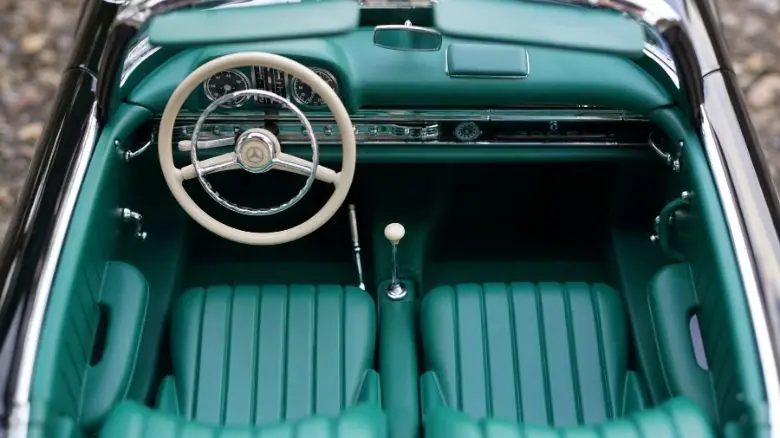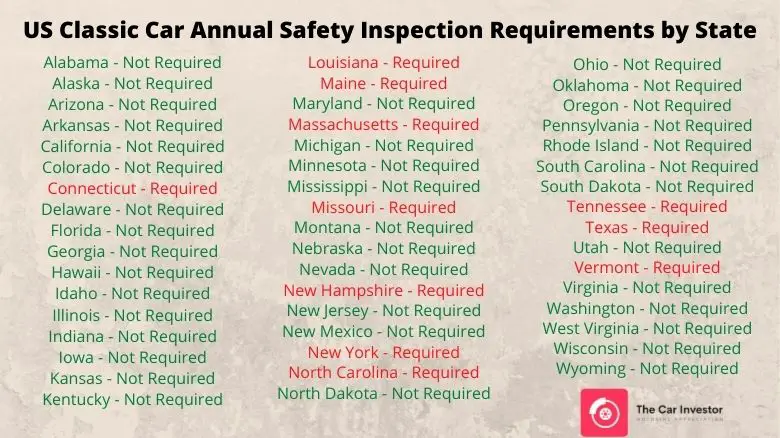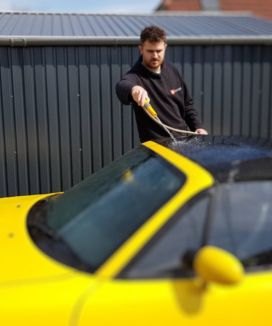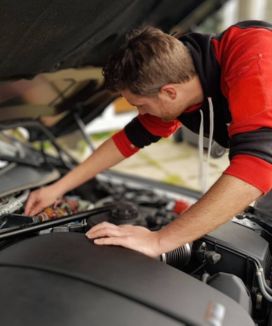Are Classic Cars Safe? (And Can You Make Them Safer?)
Table of Contents
Classic cars are more popular than ever, but many people question how safe they are when compared against modern cars.
It’s true that safety improvements have come a long way over the last couple of decades, but most countries don’t require older cars to be updated to modern safety standards. So are classic cars safe?
Classic cars are not as safe as their modern-day counterparts. Automotive safety laws are far more stringent today than they were in the past, and crash technology has moved on significantly too. You’re more likely to suffer serious injury in a classic car than a modern car.
So classic cars aren’t as safe as modern cars, but what safety features do they have, and can you do anything to make them safer?
Do Classic Cars have to have Seat Belts?
There is no legal obligation for cars to have seat belts if they were not originally fitted with them. If you have a classic car that didn’t have seat belts from new, you do not need to install them.
Seat belts weren’t introduced until the late 1960s, so if you own a classic car from before that time it may not be fitted with seat belts.
It became a legal requirement for all new cars to be fitted with seat belts from 1968 onwards, so if you own a car that was built in 1968 or later it should have them installed.

Seat belts have saved countless lives since being introduced, so if you’re looking to buy a classic car it’s worth finding out if it has seat belts before going ahead with the purchase.
Are Old Cars Without Seat Belts Legal?
Yes, old cars without seat belts are legal and you will not be asked to fit them if they weren’t installed from new.
Do Classic Cars have Airbags?
Most classic cars do not have airbags, although some modern classic cars do. It became mandatory for new cars to have airbags fitted in 1998, so all cars built since then come with them as standard.
Although airbags were first used in the 1970s, it took over two decades for them to become mandatory. By the late 1980s, consumer safety concerns had gained so much momentum that some manufacturers started fitting airbags as standard.
Despite this, most classic cars built prior to 1998 will not have airbags.
The National Highway Traffic Safety Administration (NHTSA) in the USA predicts that between 1987 and 2017, airbags saved more than 50,000 lives. Therefore, if you’re buying a classic car it’s worth researching whether the make/model you’re interested in was fitted with airbags as standard.
Do Old Cars have Crumple Zones?
Most old cars do not have effective crumple zones as crash safety technology had not progressed far enough at the time they were produced.

Crumple zones are designed to absorb the impact of a collision, diverting the energy away from the driver and passengers.
It was Mercedes-Benz that first started experimenting with this technology in the 1950s, but it wasn’t until the turn of the century that crumple zone effectiveness on road vehicles really started to improve.
If a modern car were to crash head-on with an old car, the modern car would fare much better with it’s vastly improved crumple zones.
Do Classic Cars have to be Inspected?
In the USA, some states require classic cars to be inspected annually, but others don’t. There are different laws for each state, and it will depend how classic car friendly your state is.
In the UK, all cars over 40 years of age are exempt from MOT inspections, unless the owner chooses to get their car inspected voluntarily.

Even if your authority doesn’t require an annual inspection, it’s a good idea to have your classic car checked for roadworthiness on a regular basis regardless. If your car ends up becoming unsafe, it could put you, your passengers, and other road users at risk.
Are Old Cars Unsafe?
Old cars are unsafe by modern standards. Studies show you are more likely to be seriously injured or die in a crash if you’re driving an older car due to the lack of safety features these cars were fitted with. Modern cars benefit from far superior crash technology.
As well as the safety features we’ve mentioned in this article, there are other features missing from most classic cars that help reduce the risk of death in an accident. Anti-lock brakes, traction control, and electronic stability control have all been introduced in recent decades to help mitigate the risk of fatal accidents. Most old cars, unfortunately, do not benefit from these systems.
For safety conscious people these are definitely valid concerns, but it’s also worth considering that older cars (particularly classics) are likely to be driven far less than modern cars due to their age. The less time you’re on the road in your car, the less likely you are to have an accident.
Is a 20 Year Old Car Safe?
20 year old cars are not as safe as modern-day cars, but they still have many of the safety features found in today’s vehicles. They are significantly safer than cars built 30+ years ago.
By the early 2000s, many of the safety features we see in today’s cars were being introduced to passenger vehicles. Features such as ABS, driver and passenger airbags, and traction control were already becoming commonplace.
20 year old cars are considered safe enough by most people, providing they’ve been well maintained throughout their lives and haven’t been in any serious accidents in the past.
Can You Make an Old Car Safe?
You can invest in good quality tires all round and regularly service the brakes. Although the best way to make an old car safe is to ensure it is well maintained throughout and driven carefully at all times.
Some of the most effective improvements in car safety over the last 20 years have come from advanced crumple zones, modernized airbags and electronic safety systems. Unfortunately you won’t be able to effectively add any of these mechanisms to an old car.
There are areas you can focus on such as the brakes and suspension; installing modern components will improve safety to an extent. Upgrading your headlights to match modern standards will also help with visibility.
Overall, driving an older car generally requires more skill. If you’re looking to buy a classic car and are concerned about safety, one of the best things you can consider is investing in advanced driving lessons. If anything does go wrong on the road, this will put you in the best possible position to get yourself out of trouble.
ABOUT THE AUTHOR
Adam Chinn writes about the intersecting worlds of classic cars, driving pleasure, and smart investment strategies. Starting his journey at 26, he’s proven that one doesn’t need to be wealthy to begin investing in classic cars.
Adam’s insights have been recognized on platforms such as MoneyInc, Swagger Magazine, and Top Speed.
Your journey to smarter car investments starts here.
The latest classic car data analysis, news, and expert articles delivered straight to your inbox.
- Take the guesswork out of classic car investing
- Get the tools and strategies you need to take action
- Learn the market inside-out
- Make informed decisions with confidence
Register now to see the best and worst performers, every month
You can unsubscribe at any time




